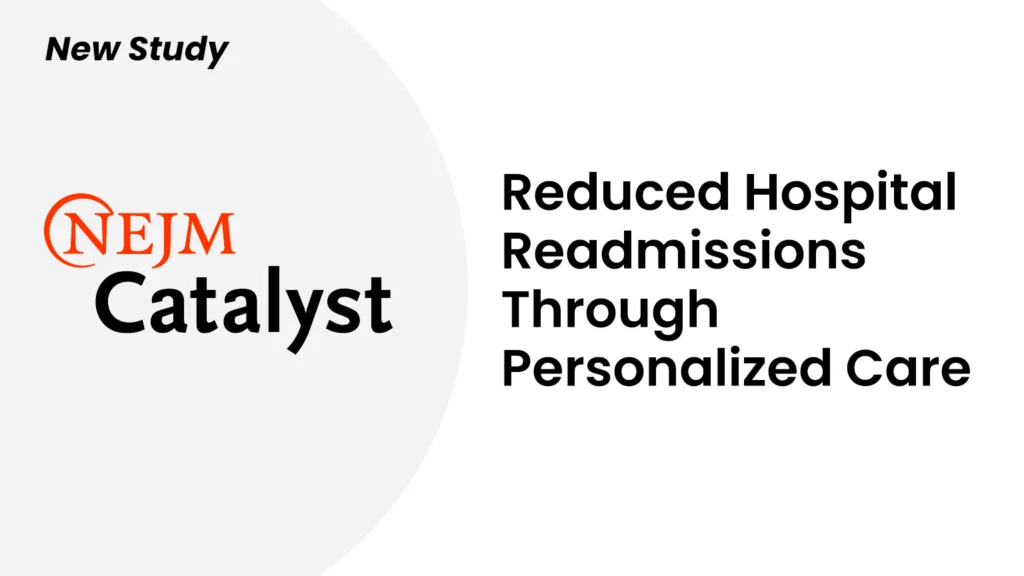Now that you understand the benefits of patient communication tools and platforms, determined the features and timeline needs of your organization, and identified your top vendors, it’s now time to contact those vendors for demonstrations and price quotes. During this process, focus on the facts. Carefully consider each vendor’s solution and how it fills your needs. Keep in mind that a live demo isn’t going to show how easy each solution will be to use since the person doing the demo knows the product well. Ask as many questions as you need to feel that you understand what the solution has to offer.
If you are working with your colleagues in the evaluation process, each team member should fill out the worksheets in the WELL Health® Definitive Buyer’s Guide to a Patient Communication Platform. When everyone is through with their evaluations, tally up the total scores for each vendor, compare all the results, and disqualify those that don’t meet your needs. If there are several vendors with close scores, use the answers from the additional considerations section in the Guide to a Patient Communication Platform to help narrow down your choices.
Here is a review of each step in the buyer’s journey of purchasing a patient communication platform.
Outline why you need the benefits of patient communication tools and platforms
The first step when evaluating patient communication platforms is to consider your organization’s goals, specific needs, use cases, and timeline. Thinking through all these key criteria and details in advance is the best way to set up your project and health system for success. The benefits of patient communication tools are they resolve your organization’s challenges and issues. Therefore, first, identify what those challenges and issues are along with your business requirements and overall goals for acquiring a new solution. Determine your top patient communication goals and the challenges that you want to address.
Next, list the features you want in patient communication tools along with the top three use cases you are looking to solve and why. Keep in mind you are looking for the right combination of features that will address your organization’s current needs, resolve key stakeholders’ concerns, support your long-term goals, and manage future challenges.
Once you have your list of specific needs, think about how the solution fits into your broader technology stack and outline what integrations will be required. If you are using many communication solutions, can they all be consolidated into one unified communications platform? Finally, determine a timeline for when you need your solution to further help you identify which vendors can accommodate your delivery date.
Who are your key stakeholders and what are their concerns?
The second step in evaluating patient communication tools is to identify key stakeholders and their top concerns in addition to the various departments that will be impacted by the technology. It’s critical to understand and address the concerns key stakeholders and decision-makers may have regarding buying a patient communication platform early in the process since you want to make sure the solution you choose fulfills as many needs as possible. This step of the buyer’s journey is about gathering information and getting feedback from senior management on their expectations for this new technology. Your goal here is to be proactive in preventing objections that might appear further down the buying process because you didn’t address someone’s concern.
It’s essential to start out by identifying those directly involved in the purchasing process or those in various groups and departments that may be affected by patient communication tools. This group will likely include various executives from your health system who need to approve new software, so understanding and addressing their questions can provide necessary important information as you evaluate products.
Every health system is different, but some typical health system positions and departments that are generally involved in this purchasing decision are the CIO, Chief of Patient Experience Officer, and other patient experience executives, Digital Health Experience officers, and IT leaders. Make these key personnel agree on the benefits of unified communication platforms. Demonstrating that you have done your due diligence on how a patient engagement platform will operationally and financially benefit and affect your health system will allow you to make a strong business case for when you ultimately decide to purchase one.
Researching vendors when evaluating patient communication tools
Once you know what features and use cases are most needed and what key stakeholder concerns to address, the third step is to research vendors that can deliver what you want. There are many patient communication tools in the marketplace so one way to identify the best solutions is to consider a vendor’s KLAS rating along with asking colleagues for recommendations. Best practices often include vetting three vendors to better understand options and pricing. If you want to research more companies, just keep in mind the more vendors to consider, the more time, resources, and energy will be required from you and your team in the process. You may also want to issue a Request for Proposal since using a structured process can help ensure consistency and that the pricing quoted by each vendor is comparable to the services offered. Other key considerations when evaluating digital patient engagement platforms are the vendor’s track record, technical expertise and competency, their ability to continuously improve upon their product, and cybersecurity program.
What are the vendor’s viability and technical competency?
The vendors on your consideration list should have a positive reputation in the healthcare industry, be financially sound, and have a verifiable track record. Research that the platform is being used by many healthcare organizations like yours to get an “apples to apples” comparison of whether the vendor is capable of servicing your organization. Another important consideration is whether the vendor developed the solution or acquired it since purchasing from a white label vendor instead of purchasing from the creator of the product can limit your flexibility for customization, scalability, and upgrades.
It is vital that the vendor you choose has the personnel with the technical expertise and competency to integrate the patient communication platform with your existing technology. A competent vendor has an integration team with deep EHR experience who can handle multiple integration types. Preferably, the vendor’s integration team is in-house, not outsourced since outsourced teams may not know the product as well, leading to delays. It is important for the vendor and customer to communicate their common goals when implementing integrations to achieve successful outcomes, so check that the vendor’s integration team can provide enough people to service your needs, use your tools, and have a policy of transparency. If you need to contact the vendor every time you need to customize the solution, you can run into time delays so ask vendors whether you can execute changes yourself.
Maintaining your patient communication platform
To keep your unified communications platform operating optimally, you want a vendor that offers attentive, responsive customer service. Below are some key services a vendor should provide to ensure your patient communication platform investment is fully supported.
- Documentation such as support articles, free online courses, and a comprehensive knowledge base to make it easy for your team to learn about the product and easily answer common questions.
- A customer success team and customer support process that will be your point of contact for any technical and service needs.
- A success plan after the unified communications platform’s launch such as detailed project management/onboarding processes to ensure you continue to receive ongoing value for your investment.
- Transparency about extra expenses such as migration and onboarding costs in addition to offboarding costs if you decide to no longer use the product.
Since the healthcare industry is ever-evolving, look for vendors who make continual updates, incorporate AI technology, and release new products with the latest innovations. The last thing you want is to purchase a patient communication platform that will become dated and inefficient.
Security is key as a benefit of unified communication platforms
Security is critical in patient communications and credible vendors maintain a comprehensive information security program covering all aspects of information security practices, policies, and procedures. The 2021 HIMSS Healthcare Cybersecurity Survey discovered that for healthcare organizations of all sizes, phishing and ransomware are the most significant security issues with financial data often the most wanted type of intelligence by hackers, just ahead of employee information and patient data.
Clearly, when vetting a healthcare communication platform, you want to ensure that the vendor is invested in the best cybersecurity practices and protections available today such as HIPAA compliance and HITRUST Certification. Healthcare organizations need to be HIPAA compliant so they can safely send electronically protected health information (ePHI) between authorized users such as providers and patients through electronic messaging like emails and texts. HITRUST is an approach to comprehensive information risk management and a compliance program to provide an integrated approach to ensuring all programs are aligned, maintained, and comprehensive to support an organization’s information risk management and compliance objectives. In addition to these two trusted industry standards, another top security practice a vendor can employ include maintaining a trained Incident Response Team who can address potential security incidents in a timely manner thus protecting their customers’ data. Don’t forget to ask the vendor what happens to your very important data if you decide to no longer be a customer.
Use realistic timelines when evaluating patient communication solutions
The fourth step when evaluating patient communication solutions is setting realistic timelines which is critical so that your company and the vendor both know what they are accountable for in ensuring the solution is implemented successfully. When evaluating which vendor offers the timeline that matches your needs the best, here are some key considerations:
- Vendor response time – Every vendor has a different response time so determine how quickly you need things done and look for a vendor that offers a response style that you want.
- Negotiating contracts – Vendors who typically work with organizations like yours are more likely to have standard terms that will be appropriate for your organization and will require little to no revisions – accelerating the entire contracting process.
- Implementation timeline – Every implementation will vary depending on your company’s needs. Ask potential vendors for estimates based on their experiences with companies of your size and with your EHR. Think about the major milestones throughout the implementation journey and how many weeks each step may take.
Key milestones in a health communication platform implementation
To stay on track with the patient communication platform adoption, it’s important to establish key milestones and phases throughout the entire process. General project milestones include Onboarding, Build, Testing & Acceptance, Production Build and Cutover, and finally, the Go-Live. After Onboarding, you should have an updated project plan, an introduction to your project teams, and an overview of the end-to-end process for setting up the patient communication platform in your environment. Once the Location Mapping template is completed, the VPN connectivity is established, and introductory training has begun, the Build begins where the vendor can start building the Pilot Practice for your departments and related phone lines.
The Testing and Acceptance process is all about testing the communication system. The first part of this phase will be Unit Testing, which is designed to ensure that all aspects of the integration between you and your EMR function as expected. Once the unit testing is complete, the vendor will then review the user acceptance testing (UAT) process. This allows the vendor to test the Appointment and Inbound Message Automations you have chosen to implement. The goal here is to ensure Automation works as anticipated, focusing on ensuring patient language and communication preferences are referenced correctly, links work, and events behave as expected.
During the Production Build and Cutover phase, the accepted build is moved into production. Your vendor will configure critical practice functionalities, including building your automation filters, establishing key practice settings, and adding staff users. At Go-Live, the patient communication platform is ready to be used! During your pre-scheduled go-live check-ins, you will have the opportunity to connect with your vendor and confirm your automations are sending correctly. At this point, the vendor should also provide you with instructions on how to contact support and equip you with the resources you will need to be successful.
The journey for a unified communications platform continues
We’ve now completed the fifth step in the buyer’s journey. By now, you have reviewed the initial criteria to consider when evaluating patient communication platforms, identified key stakeholders involved in the decision-making, researched vendors, evaluated them, and identified your first choice for a patient communication platform vendor. For the sixth and final step, you will need to create a business case for getting the necessary approval for your vendor of choice.
For more information, download the WELL Health® Definitive Buyer’s Guide to a Patient Communication Platform – a comprehensive outline of the buying process divided into six easy steps. Reviewing this guide will increase the odds that you will make the right vendor selection for your patient communication software.♥



